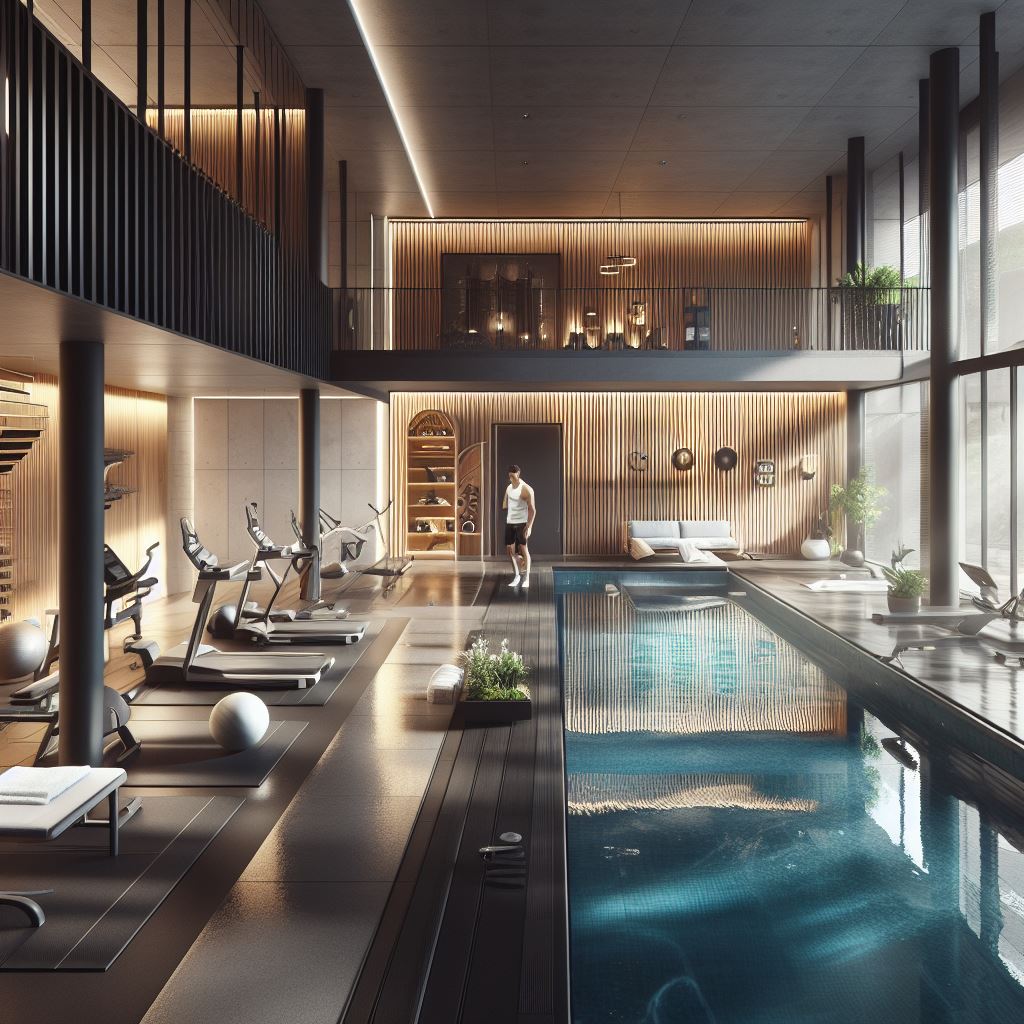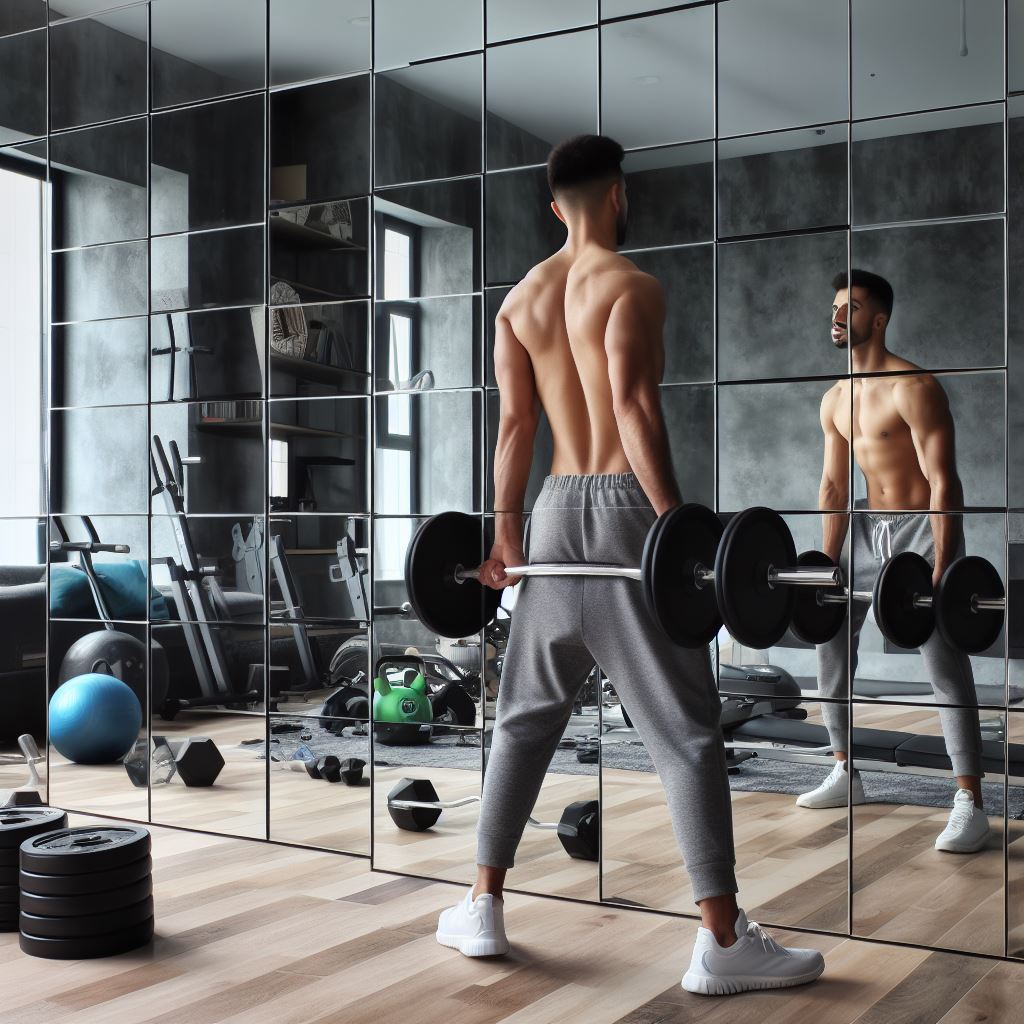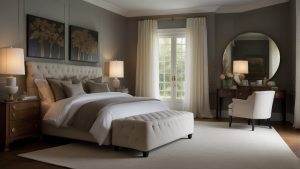Creating the perfect home gym is not only about having the right equipment, but also about creating an inviting space that motivates you to work out. In this article, we will explore seven essential tips on how to design a home gym that meets your fitness goals and suits your personal style. From choosing the right location in your home to selecting the perfect equipment and creating an atmosphere that energizes you, these tips will help you create a home gym that you’ll love stepping into every day.

Choosing the Right Space
Dedicating a Room or Using Available Space
When designing a home gym, the first step is to choose the right space. You have two options: dedicating a whole room or utilizing available space in your home. If you have a spare room, such as a guest bedroom or a basement, that can be the ideal location for your gym. It provides privacy and allows you to fully customize the space to meet your needs. However, if you don’t have a spare room, don’t worry! You can still create a great workout area by utilizing available space, such as a corner in your living room or a portion of your home office.
Considering Ceiling Height and Flooring
Once you’ve selected the space, it’s important to consider the ceiling height and flooring. For most exercises, a ceiling height of at least 8 feet is recommended to allow for overhead movements without restrictions. As for the flooring, you’ll want to choose a material that is both durable and shock-absorbent. Options like rubber flooring or interlocking foam tiles work well in a home gym as they provide cushioning and protect your joints from impact.
Ensuring Sufficient Ventilation and Lighting
Ventilation and lighting are crucial aspects to consider when designing your home gym. Adequate ventilation helps keep the space fresh and prevents the buildup of unpleasant odors. You can achieve this by installing a ceiling fan or opening windows during your workouts. Additionally, proper lighting is essential for a safe and enjoyable workout experience. Aim for a combination of natural and artificial light sources to provide ample illumination. Consider installing LED lights for energy efficiency and positioning mirrors strategically to reflect light and create the illusion of a larger space.
Deciding on Equipment
Assessing Your Fitness Goals and Needs
Before investing in any equipment, take some time to assess your fitness goals and needs. Are you looking to build strength and muscle mass? Or do you prefer cardiovascular exercises for weight loss? Understanding your goals will help you determine which types of equipment are the most suitable for you. For example, if you’re focused on strength training, investing in a weight bench, dumbbells, and resistance bands would be beneficial. On the other hand, if you’re more interested in cardio, a treadmill or stationary bike might be the better choice.
Maximizing Space with Multi-Functional Equipment
When designing a home gym, space can be a constraint. To maximize the use of your available area, consider investing in multi-functional equipment. These are pieces of exercise equipment that offer multiple exercises in one machine, saving both space and money. For example, a power tower can be used for pull-ups, dips, and various abdominal exercises. Another versatile option is an adjustable weight bench that can be used for both bench presses and as a step platform for cardio exercises.
Focusing on Essential Equipment First
If you’re on a limited budget or have limited space, prioritize purchasing the essential equipment first. These are the items that will provide the most versatile and effective workouts. Some examples of essential equipment include dumbbells, resistance bands, a yoga mat, and an exercise ball. These pieces are relatively inexpensive, require minimal storage space, and offer a wide variety of exercises to target different muscle groups. As you progress and have more room in your budget, you can gradually add more specialized equipment to further enhance your workouts.
Layout and Organization
Considering Access and Flow
When designing your home gym, it’s crucial to consider access and flow within the space. Arrange your equipment in a way that allows for easy movement and minimizes any obstacles. The layout should provide a clear path without hindering your ability to perform exercises. Ensure that you have sufficient space around larger equipment, such as a treadmill or weight bench, to move comfortably and safely. Consider the proximity to power outlets and make sure cords are not a tripping hazard.
Arranging Equipment Based on Frequency of Use
An efficient organization system is key to a well-functioning home gym. One way to achieve this is by arranging your equipment based on the frequency of use. Place the items you use most frequently within easy reach, while less frequently used equipment can be stored away or placed in less accessible areas. For example, if you do daily cardio workouts on a treadmill, position it in a central location for quick access. On the other hand, equipment like heavy weights or specialized machines can be placed in the corners or against walls.
Creating Dedicated Zones
To optimize your workout experience, consider creating dedicated zones within your home gym. These zones can be focused on different types of exercises or muscle groups. For instance, you could have a strength training zone with your weight bench, dumbbells, and resistance bands, and a separate area for cardio exercises with a treadmill or stationary bike. By establishing designated zones, you create a sense of order and purpose, making it easier to stay focused and motivated during your workouts.
Creating a Motivating Environment
Choosing Appropriate Colors and Lighting
The environment you create in your home gym can significantly impact your motivation and enjoyment during workouts. One way to enhance the mood is by choosing appropriate colors and lighting. Consider using vibrant and energizing colors like red or orange to stimulate motivation and increase energy levels. On the other hand, if you prefer a more serene and calming environment, opt for softer colors like blue or green. Additionally, ensure that your lighting is bright enough to prevent any dimness or shadows that can affect your focus and safety.
Adding Inspirational Posters or Quotes
Motivational posters or quotes can be a powerful tool to keep you inspired and focused on your fitness goals. Hang up posters that feature athletes or fitness role models whose achievements inspire you. You can also display quotes that resonate with you and provide a positive mindset during workouts. By surrounding yourself with motivational reminders, you’ll be more likely to stay committed and push through challenging workouts.
Installing a Mirror Wall
A mirror wall is a fantastic addition to any home gym. Not only does it create the illusion of a larger space, but it also serves as a functional tool for checking your form and alignment during exercises. Proper form is crucial for maximizing the effectiveness of your workouts and preventing injuries. A mirror wall allows you to observe your movements and make adjustments as needed. Additionally, mirrors reflect light, making the space brighter and more visually appealing.

Ensuring Safety
Using Appropriate Flooring and Mats
Safety should always be a top priority when designing a home gym. One important aspect is using appropriate flooring and mats. As mentioned earlier, rubber flooring or interlocking foam tiles are excellent choices as they provide cushioning and reduce the risk of slips or falls. Additionally, invest in high-quality exercise mats to protect your joints and provide stability during floor exercises. Mats can also absorb impact and reduce noise levels, making your workouts more comfortable and enjoyable.
Securing Equipment and Weights
To prevent accidents or injuries, it’s essential to secure your equipment and weights properly. If you have equipment with moving parts, such as a treadmill or an adjustable weight bench, ensure that all locking mechanisms are engaged before using them. Store weights on racks or shelves designed specifically for that purpose, ensuring they are stable and won’t tip over. Also, consider using weight collars or clamps to secure weights onto bars and dumbbells during exercises.
Including Safety Measures like First Aid Kit and Fire Extinguisher
Having safety measures in place is crucial for any home gym. Keep a well-stocked first aid kit readily available in case of minor injuries or accidents. It should include basic supplies like band-aids, antiseptic solution, and cold packs. Additionally, consider having a fire extinguisher nearby, especially if your home gym is located in a basement or another area with limited exit options. Regularly check the expiration dates of your safety equipment and ensure everyone in your household knows their location and how to use them.
Setting Up a Sound System
Choosing the Right Speakers and Audio Source
Listening to music or podcasts can greatly enhance your workout experience, and having a good sound system in your home gym is essential for this. When setting up your sound system, consider the acoustics of the space and choose speakers that provide clear and balanced sound. Look for wireless speakers that connect to your audio source, such as a smartphone or tablet, via Bluetooth or Wi-Fi. This eliminates the need for cables that may get in the way during your workouts and allows you to conveniently control the music from your device.
Creating Zones with Music Volume Control
If your home gym is a shared space or located near other areas where people might be disturbed by loud music, it’s important to create zones with music volume control. This can be achieved by installing speakers with independent volume settings in different areas of your gym. For example, you can have higher volume near your cardio zone where music can provide motivation, and lower volume in the strength training area if you prefer a quieter atmosphere. This way, you can enjoy your workout without disturbing others in your home.
Considering Wireless or Bluetooth Options
Wireless or Bluetooth options for your sound system can provide convenience and flexibility in your home gym. With wireless speakers, you can position them wherever you want without the need for cables running across the floor. Bluetooth connectivity allows you to easily connect your audio source to the speakers without any additional equipment. This means you can listen to music or audio from your smartphone or any Bluetooth-enabled device without the hassle of wires. Consider investing in a sound system that offers these wireless features to enhance your overall workout experience.
Incorporating Storage Solutions
Utilizing Wall-Mounted Shelves or Cabinets
Storage is crucial for keeping your home gym organized and tidy. Utilize wall-mounted shelves or cabinets to store smaller items like resistance bands, yoga blocks, and exercise balls. This not only frees up floor space but also keeps your equipment easily accessible and visible. Choose sturdy shelves that can handle the weight of your equipment and ensure they are securely mounted to the wall. Additionally, consider using clear containers or labels to further enhance organization and make it easier to find what you need.
Investing in Storage Racks or Bins
For larger equipment or accessories, investing in storage racks or bins can be a game-changer. Vertical storage racks are ideal for items like foam rollers or yoga mats, allowing them to be neatly stored against a wall. Bins or baskets can be used to hold smaller accessories like resistance bands, jump ropes, or workout gloves. When selecting storage solutions, opt for sturdy and durable options that can withstand the weight of your equipment and keep everything tidy and easily accessible.
Organizing Accessories and Equipment
To create a functional and efficient space, organizing your accessories and equipment is essential. Group similar items together and consider using dedicated storage solutions for each category. For example, create a designated area for your yoga accessories, with a mat hanger, blocks, and straps all located together. Hang resistance bands or attach them to a small hook on the wall near your strength training zone. By organizing everything in a logical manner, you’ll be able to find what you need quickly and start your workouts without unnecessary searching or frustration.
Designing for Comfort and Convenience
Including a Comfortable Seating Area
Designing your home gym to include a comfortable seating area can provide a space for rest and recovery between sets or after intense workouts. Consider adding a bench or lounge chair where you can relax and catch your breath. This area can also serve as a space to stretch or do mobility exercises. Make sure the seating is comfortable and supportive, allowing you to fully relax and recharge before continuing with your workout.
Ensuring Proper Temperature and Ventilation
Comfort and convenience are paramount when designing a home gym, and this includes ensuring proper temperature and ventilation. Temperature control is essential for an optimal workout environment, so make sure your gym is well-insulated and has a reliable heating and cooling system. If possible, install a ceiling fan or have windows that can be opened to improve airflow and ventilation. Good ventilation helps regulate temperature, removes stale air, and provides fresh oxygen, contributing to a more enjoyable and comfortable workout.
Adding Amenities like a Water Dispenser and Towel Rack
Including amenities like a water dispenser and towel rack can greatly enhance your workout experience. Staying hydrated is crucial during exercise, so having a water dispenser or a countertop water cooler nearby can save you from having to leave the gym for a drink. Mounting a towel rack on the wall ensures that clean towels are always within reach, helping you wipe away sweat and stay comfortable during your workout. These simple additions not only add convenience but also make your home gym feel more like a professional fitness facility.
Considering Aesthetics
Selecting Decorative Elements that Align with Your Style
While functionality is essential, aesthetics play a significant role in creating a home gym that you enjoy spending time in. Select decorative elements that align with your personal style and create a pleasing atmosphere. Consider the overall theme or color scheme of your home and extend it into your gym area. This can be done through paint choices, artwork, or decorative accents. Choose elements that make you feel positive and motivated, whether it’s a vibrant color palette, modern minimalist design, or rustic farmhouse aesthetic.
Creating a Focal Point with Art or Plants
Creating a focal point in your home gym can add visual interest and make the space feel more inviting. One way to achieve this is by incorporating art or plants. Hang a large piece of artwork that inspires you or promotes a positive mindset. It could be a photograph, painting, or motivational quote. Similarly, adding plants can bring life and freshness to your gym. Indoor plants not only improve air quality but also create a calming and natural ambiance. Choose low-maintenance plants that thrive in the conditions of your gym, such as snake plants or pothos.
Incorporating Natural Light and Outdoor Views
If possible, take advantage of natural light and outdoor views when designing your home gym. Natural light not only creates a bright and inviting space but also offers numerous health benefits. Exposure to natural light has been shown to improve mood, increase vitamin D levels, and enhance productivity. Position your gym near windows or glass doors to maximize natural light. If privacy is a concern, consider using sheer curtains or blinds that allow light to filter through while maintaining your privacy. Additionally, if you have a pleasant outdoor view, position your equipment to face it, allowing you to enjoy the scenery during your workouts.
Maintaining and Upgrading
Establishing an Equipment Cleaning and Maintenance Routine
To keep your home gym in optimal condition, it’s essential to establish an equipment cleaning and maintenance routine. Regularly wipe down your equipment using a non-abrasive cleaner or disinfectant to remove sweat and bacteria. Pay special attention to surfaces that come in direct contact with your hands, such as dumbbells or handles. Inspect your equipment regularly for any signs of wear or damage, and address any issues promptly to prevent accidents or injuries. Following a consistent maintenance routine will extend the lifespan of your equipment and ensure a safe and enjoyable workout environment.
Reevaluating Equipment and Layout Over Time
As you progress on your fitness journey, it’s important to regularly reevaluate your equipment and layout to ensure it still aligns with your goals and needs. Over time, your fitness goals may change, or you may develop new interests and require different equipment. Periodically reassess your workout routine and determine if any equipment upgrades or additions would better support your evolving fitness needs. Additionally, consider whether your current layout still optimizes the available space and if any adjustments would improve the flow and functionality of your home gym.
Staying Informed About New Fitness Trends and Technologies
The fitness industry is constantly evolving, with new trends and technologies emerging regularly. To make the most of your home gym and stay engaged in your workouts, it’s important to stay informed about these advancements. Follow reputable fitness sources, subscribe to fitness magazines or newsletters, and explore online forums or social media groups dedicated to fitness enthusiasts. By staying up to date with the latest trends and technologies, you can make informed decisions about equipment upgrades, training methods, and workout routines, ensuring that your home gym remains relevant and effective.



